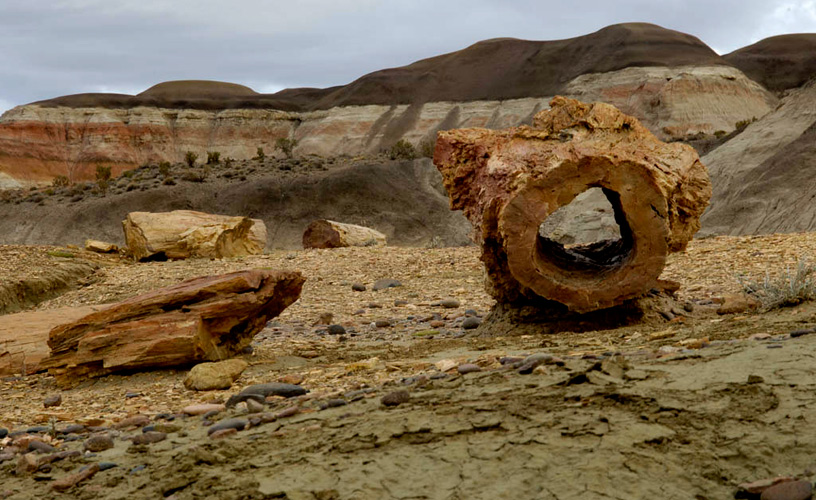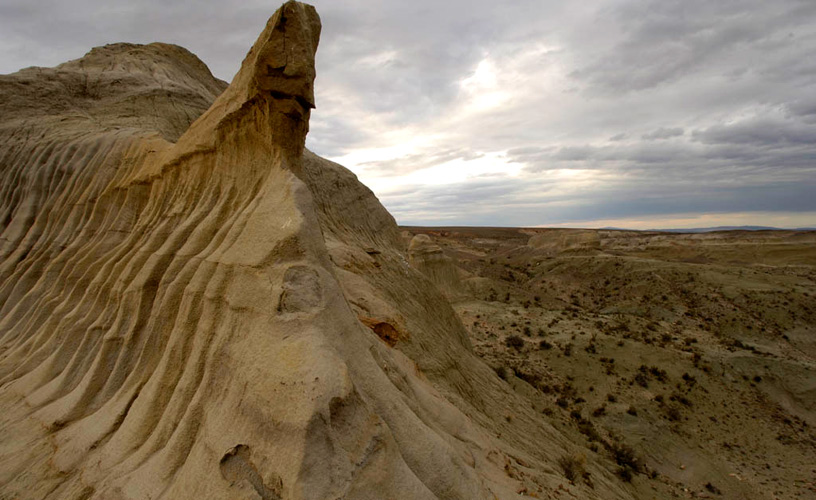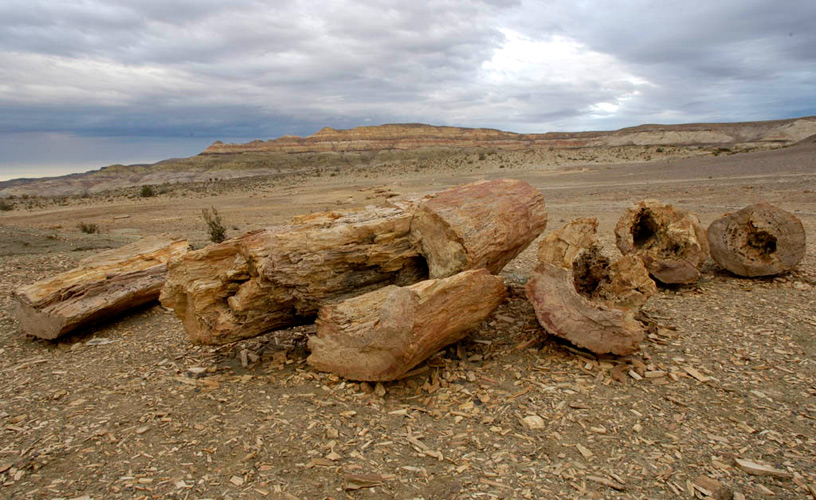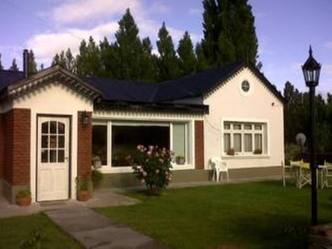We visited Sarmiento Petrified Wood, a desolate and flabbergasting scene where the loneliness of the arid steppe makes it difficult to imagine a green garden full of life. We had a look but did not understand why there were so many large logs scattered all around.
In order to grasp the process that transforms organic matter changing wood into rock, we approached the park ranger station at this natural reserve. Our first question was: “Why are these logs in this condition?” “Those logs once were healthy conifers and palm trees. They experienced the effects of volcanic eruptions and ash settlement”, was the way the conversation began.
Then we learned that when the Andes Mountain Range rose in the Tertiary, it prevented the humid air from the Pacific Ocean from reaching the Atlantic. At the same time, during the volcanic processes that took place in those days, the area was hit by ashes and molecular absorption, impregnation, substitution and mutation. Thus, the logs were changed without losing their appearance.
Scientists assert that back then the climate used to be tropical hot and temperate, with a very high degree of humidity. The reconstruction took place through very small pollen grains that offered information about the prevailing vegetation.
Petrified Wood Natural Monument
Still as Rock
Years of study of these paleontological findings have revealed that the primitive species come from the Lower Tertiary Period in the Paleocene and that they used to form woods. The proximity of the Atlantic Ocean provided the necessary humidity for these trees to be surrounded by ponds and varied wildlife.
All in all, the appearance of these petrified logs, the almost lunar surrounding scene and the low hills around featuring various hues make up a very attractive landscape certainly worth a visit.
We observed the site and received explanations that made us even more curious. So, as we got home, we searched for books and articles on the subject.
Mónica Pons
Palmiro Bedeschi





















